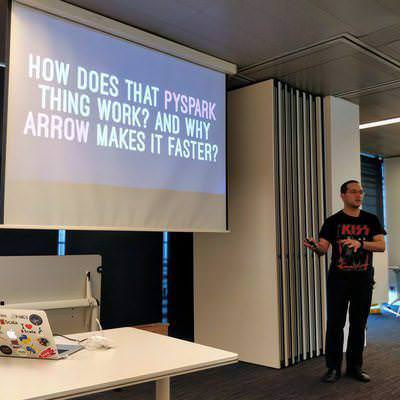The year has ended, what has been going on?
This is how I handle the dreaded GTD (Getting Things Done) weekly review when using Things 3.
This week I have been working a lot with a relatively large dataset on a Spark shell. It was a graph with 1 billion nodes and 2 billion edges that I wanted to analyse with GraphFrames (the successor of GraphX on Spark).
Even though I have been a long time user of oh-my-zsh on zsh (moved from plain bash to zsh like 10 years ago), I have been minimal on my use of its theme capabilities. I have used the default theme forever: robbyrussell. But recently I was showing my friend @craftycoder the tweaks I have on my system (fzf, autojump, etc) and he showed me this theme, agnoster.
A few days go I played a bit with a naive implementation of Bloom
filters in Python. I wanted to time
them against just checking whether a field is in a set/collection. I found
something slightly puzzling: it looked like the in worked too fast for
smaller lists. And I wondered: maybe small lists are special internally, and
allow for really fast lookups? Maybe they have some internal index? This raised
the question: how does in find stuff in sequences?

